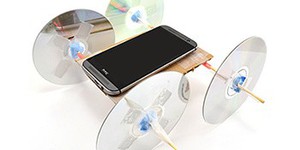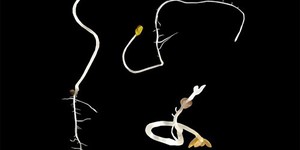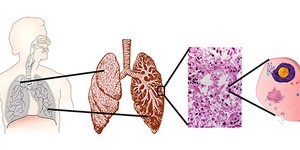Middle School Lesson Plans (135 results)
Science Buddies' middle school science projects are the perfect way for middle school students to have fun exploring science, technology, engineering, and math (STEM). Our middle school projects are written and tested by scientists and are specifically created for use by students in the middle school grades. Students can choose to follow the science experiment as written or put their own spin on the project.
For a personalized list of science projects, middle schoolers can use the Science Buddies Topic Selection Wizard. The wizard asks students to respond to a series of simple statements and then uses their answers to recommend age-appropriate projects that fit their interests.
|
Select a resource
Sort by
|
Lesson Plan
Grade: 6th-8th
4 reviews
We hear the word "digital" all the time—digital technology, digital device, digital TV, etc. But what does it actually mean? In this lesson plan, your students will learn how digital signals allow us to reliably transmit and store information.
Read more
NGSS Performance Expectations:
Lesson Plan
Grade: 8th-12th
1 review
In this STEM lesson, students will build a mini popsicle stick drone and use feedback control with an Arduino and an ultrasonic sensor to control the drone's altitude.
Read more
Lesson Plan
Grade: 6th-12th
Create a two-part system for filtering greywater. Teams will focus on communication and systems engineering as they build separate components to filter solid and liquid waste and then combine them into one device.
Learning Objectives
Students will:
Consider the potential effects of drought and how greywater could be part of the solution.
Design a system for filtering out solid waste or liquid waste.
Consider effective communication strategies with their team.
Collaborate on their design…
Read more
Lesson Plan
Grade: 3rd-8th
1 review
You'll be surprised at how many misconceptions you can debunk by modeling the phases of the moon with a light and a styrofoam ball!
Read more
Lesson Plan
Grade: 6th-8th
5 reviews
In this small group activity, students will build a plant seed (burr) from a Styrofoam® ball and other crafts materials. The seed needs to be designed in a way that it can be dispersed by attaching to a mockup animal (wool glove). Students will first test if their seed attaches to the wool glove and then carry their attached seed along an obstacle course inside the classroom. As students design their plant seed and mimic its dispersal via an animal, they will realize how some plants grow…
Read more
NGSS Performance Expectations:
Lesson Plan
Grade: 3rd-8th
2 reviews
>
How much space is in space? Students build a simple model and practice fractions to see how much space exists between different objects in our solar system.
Read more
Lesson Plan
Grade: 6th-8th
Don't just teach your students about Newton's laws of motion using diagrams in a textbook—try something hands-on! In this project, students will build their own cars using craft materials and explore the relationship between force, mass, and acceleration. Students can graph data and make observations in real-time using a mobile phone and a sensor app or use a low-tech approach with a meter stick and stopwatch.
Read more
NGSS Performance Expectations:
Lesson Plan
Grade: 6th-8th
6 reviews
How do plants know which way is up or down? How does this affect which direction their roots will grow? In this lesson plan, your students will investigate how changes in a plant's environment, like the direction of gravity, affect the shape of its growing roots over a period of several days.
Read more
NGSS Performance Expectations:
Lesson Plan
Grade: 6th-8th
3 reviews
The human body is complex! In this lesson, it is broken down into smaller, manageable parts. Students will build a lung model and discover how different parts of the respiratory system work together to make breathing possible. Next, they will discuss how this system works together with other systems in the body so oxygen can reach every cell of the body. While students perform these explorations, they will realize that multicellular organisms consist of systems, which are a collection of organs…
Read more
NGSS Performance Expectations:
Lesson Plan
Grade: 6th-8th
How do "instant" cold packs get cold when they are stored at room temperature, unlike a regular ice pack which must be stored in the freezer? In this lesson plan, students will explore several endothermic and exothermic reactions, and use their observations to choose the chemical reaction that best fits the design constraints for their own chemical cold pack.
Read more
NGSS Performance Expectations:
|
Explore Our Science Videos
How Do Viruses React To Soap?
How Far Will It Fly? Explore Drag with Paper Airplanes
Solar Panel Angle for the Junior Solar Sprint


















